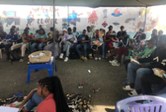E-waste Volume I: Inventory Assessment Manual
Faster downloadPublished Year: 2007

Language: en
Summary: Waste Electrical and Electronic Equipment (WEEE) or E-waste is one of the fastest growing waste streams in the world. In developed countries, it equals 1% of total solid waste on an average. The increasing “market penetration” in developing countries, “replacement market” in developed countries and “high obsolescence rate” make WEEE/E-waste one of the fastest waste streams. There is a pressing need to address ewaste management particularly in developing countries. The presence of valuable recyclable components attracts informal and unorganised sector. The unsafe and environmentally risky practices adopted by them poses great risks to health and environment. For effective WEEE/E-waste management, we need to quantify and characterize this waste stream, identify major waste generators, and assess the risks involved. A scientific, safe and environmentally sound management system, including policies and technologies, needs to be developed and implemented. International Environmental Technology Centre (IETC) of Division of Technology, Industry and Technology (DTIE) of UNEP is assisting member countries on ISWM. IETC is also focusing on WEEE/E-waste management as a part of ISWM. As an initial step, to build the capacity, IETC has produced two manuals on WEEE/E-waste to assist the member countries and their cities to develop the inventories and WEEE/E-waste management system. This first manual on WEEE/ E-waste has been prepared as a guidance document to support WEEE/E-waste inventorisation and assessment risks involved. This manual has been prepared based on data from secondary sources including publications from scientific journals, reports and web sites. A case study based approach has been adopted to provide the examples of live situations so that it can be easily adapted to local conditions








